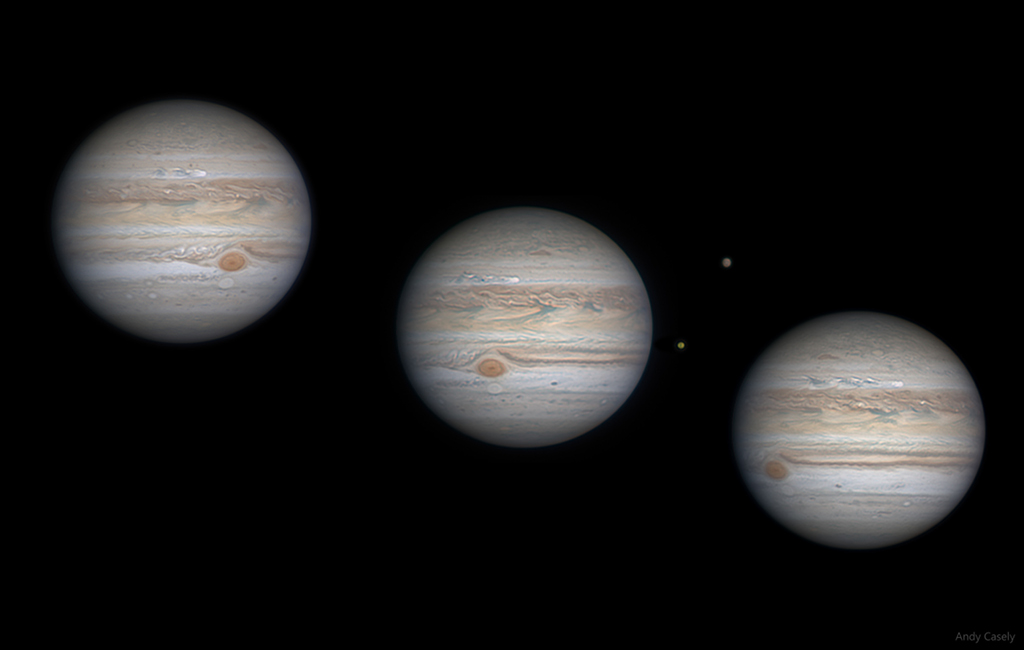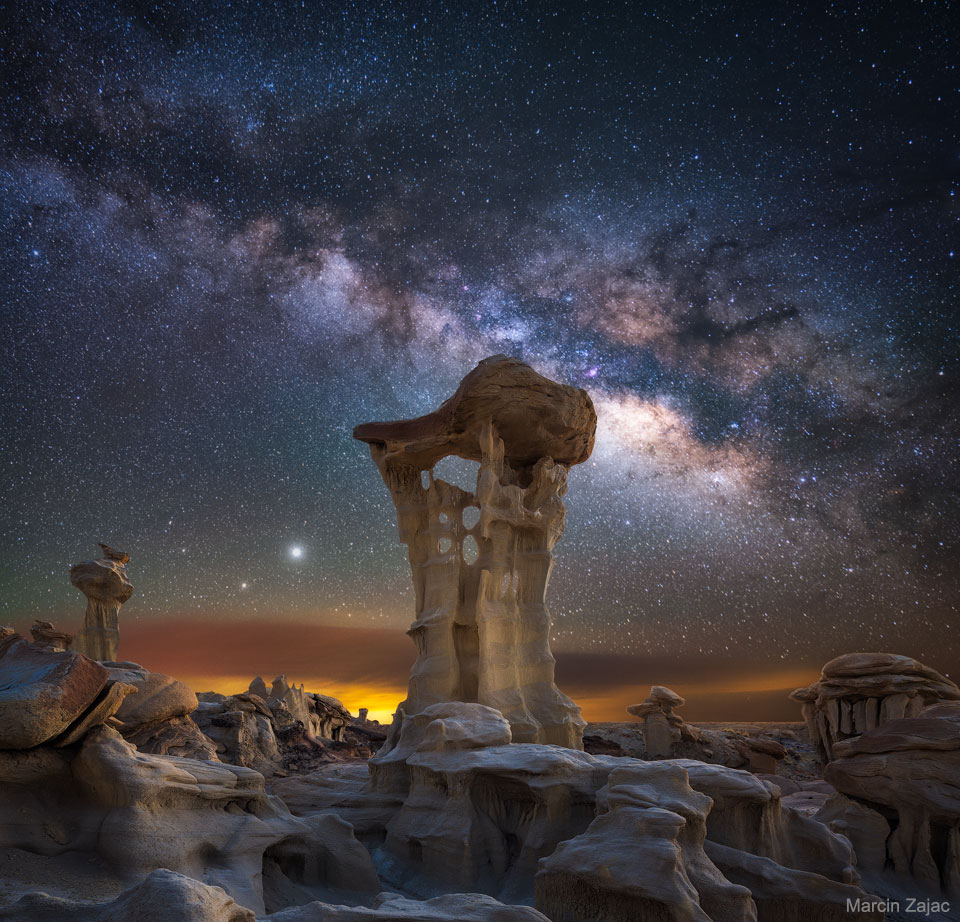木星北极的彩色旋风
Cyclones at the north pole of Jupiter appear as swirls of striking colors in this extreme false color rendering of an image from NASA’s Juno mission. The huge, persistent cyclone found at Jupiter’s north pole is visible at the center of the image, encircled by smaller cyclones that range in size fro […]










